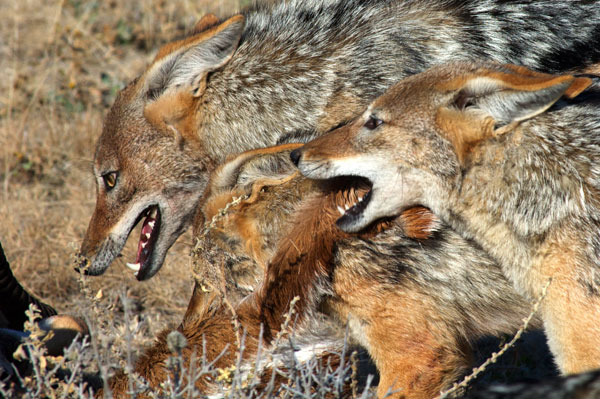 Black-backed jackals in Etosha National Park, Namibia. Photo by Steve Bellan
Black-backed jackals in Etosha National Park, Namibia. Photo by Steve Bellan
In addition to studying anthrax in mega-herbivores, Getz lab member Steve Bellan is looking at how the behavior of scavengers, like the black-backed jackals shown above, contributes to the dynamics of infectious diseases.
The striking difference between the mechanisms of rabies transmission (direct host-host contact) and anthrax transmission (consumption of bacterial spores) highlights the role of behavior in determining disease dynamics.
Rabies outbreaks reflect the territorial structure of jackal populations--a disease front quickly moves through the landscape. In contrast, anthrax outbreaks are episodic in nature reflecting poorly understood interactions between foraging behavior, environmental conditions, and spore dispersal.
Learn more about Steve's research
Update March 2013:
Steve received his PhD in 2012 and is now a postdoctoral researcher at the University of Texas at Austin, where he uses a combination of mathematical modeling and field work to gain insight into the epidemiological dynamics of infectious diseases in wildlife (such as anthrax) as well as diseases of humans.
